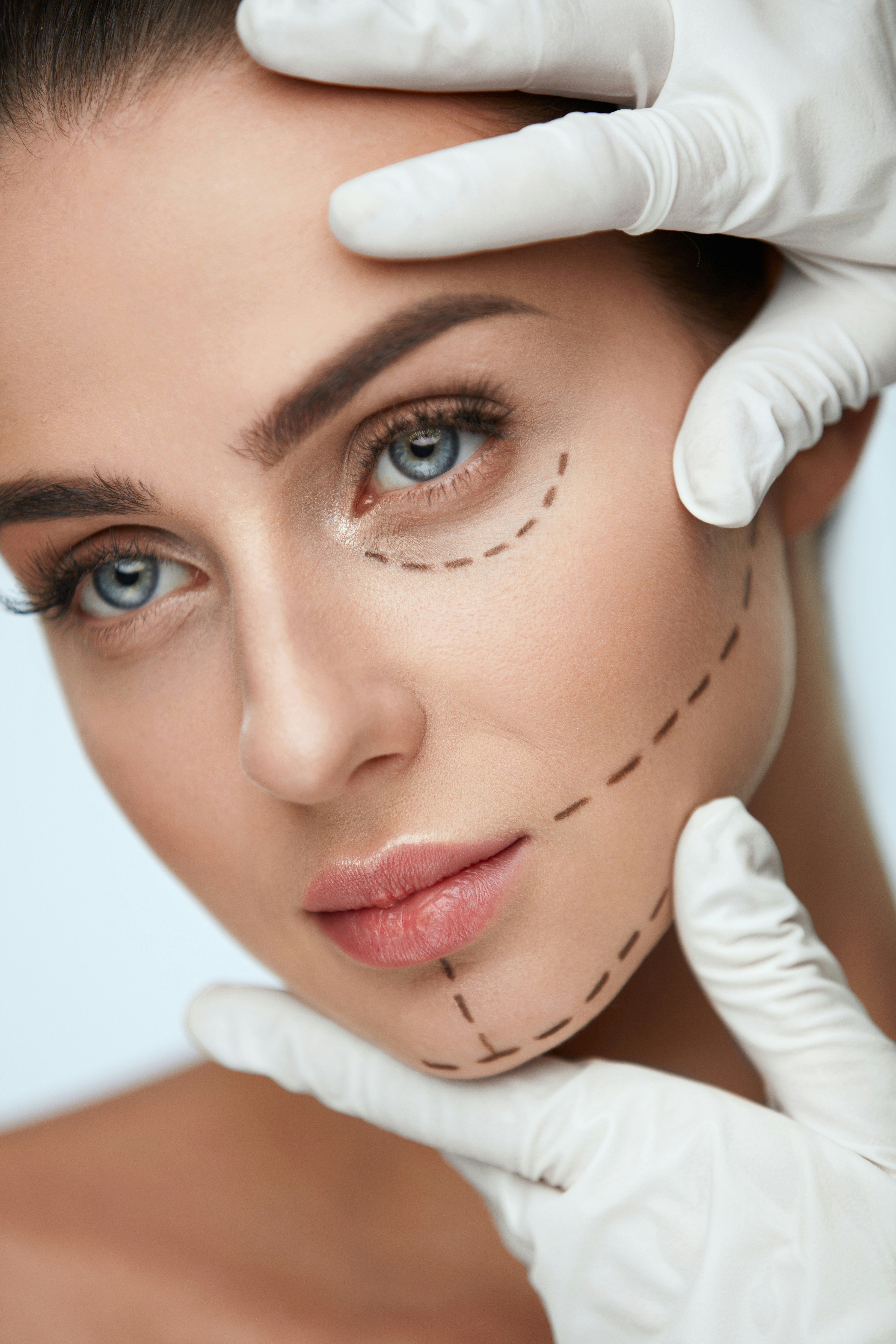Other Treatment Methods

Facelift
With increasing Age skin and muscles in the face and neck become loose. This results in sagging cheeks and a wrinkled neck; one looks olderthan one feels. Various facelift treatments based on the latest scientific findings rejuvenate the appearance, and the skin looks smooth and fresh again. A natural appearance has top priority in these procedures.
Facelift – Rejuvenation of the face and neck
Age brings not only more wisdom but often also wrinkles along with it. Double chins and hamster cheeks are also often found to be disturbing. Triggers for the changed appearance include less elastic skin, sagging muscles, and fat tissue that redistributes. Often, the mirror image and self-image no longer match; one feels younger and more vital than one looks. A face-neck lift can rejuvenate the face and neck and make the appearance more attractive.
What is a facelift?
A facelift is an aesthetic operation in which the surgeon remodels the lower third of the face and neck area. A good surgeon focuses on the individual's charisma and enhances the patient's self-esteem through the procedure. The face looks fresh again without appearing operated. The goal is a gentle, low-complication approach with long-lasting results.
Procedure of the operation
During the procedure, the patient is in a "twilight sleep", which leads to complete painlessness , monitored by an experienced anesthetist. State of the Art is the facelift, in which the surgeon forms and lifts a thin but very strong layer, the so-called SMAS (Superficial Muscular Aponeurotic System). The SMAS is a musculo-fibrous layer located in the subcutaneous layer of facial and neck skin. If its elasticity decreases, the face sags downward and loses its dynamics as well as youthful contour. In the facelift with SMAS, the surgeon tightens not the unelastic skin but the underlying SMAS layer. This tightens the "internal support framework" of the face and neck and rejuvenates the personal appearance: from the cheek area to the chin and neck to the clavicle. After the surgeon has lifted and fixed the SMAS, he shapes the contours of the face and removes excess skin parts.
For an aesthetic and natural result, he must consider individual details such as hairlines, the position of the earlobes, and fat distribution (see illustration). The surgeon closes the wounds with fine stitches. Usually, a small tube drains wound water and secretions during the first night. A head bandage and medication counteract swelling and secondary bleeding. Risks Swelling and bruising usually disappear within one to two weeks. Complications are usually rare. These include injuries to nerve fibers that can lead to sensory disturbances and muscle paralysis. In rare cases, secondary bleeding, severe swelling, wound healing disorders, scar formation, and hair loss are possible.
Risks of a facelift
Swelling and bruising usually subside within one to two weeks. Complications are usually rare. These include injuries to nerve fibers, which can lead to sensory disturbances and muscle paralysis. Postoperative bleeding, severe swelling, wound healing disorders, scarring, and hair loss are also possible in rare cases.
After the operation
After the procedure, the patient stays in the hospital for one night. Drains and bandages are usually removed the day after the procedure, and the sutures after ten days. Initially, the face is cooled with a specially designed cooling device or fabric-covered "cold packs". Mild tension pain is normal; pain relievers help with this. After two weeks, you can resume your normal activities. Sport is possible after six weeks, Sauna and Steam bath are allowed after a few months.
Other Treatment Methods in this Department
Experts for this Treatment Method

- Aesthetic Surgery & Dermatology
Dr. med. Elisabeth Zott-Schuhmachers
Meine Haut München
- Aesthetic Surgery & Dermatology
Dr. med. Neda Nabavi
Ästhetisch Plastische Chirurgie
- Aesthetic Surgery & Dermatology
Dr. med. Michaela Montanari
Plastische und Ästhetische Chirurgie
- Aesthetic Surgery & Dermatology
Dr. med. Caroline Kim
Praxis für Ästhetische und Plastische Chirurgie
- Aesthetic Surgery & Dermatology
Dr. med. Christian Jacobi
Ästhetik Zentrum Tegernsee
- Aesthetic Surgery & Dermatology
Dr. Dr. med. Wolfgang Funk
Klinik Dr. Funk, Klinik für Ästhetische-, Plastische- und Transgender-ChirurgieAll Experts in this Department
Show All
- Aesthetic Surgery & Dermatology
Dr. med. Anna Brandenburg
Dermatologische Privatpraxis Dr. Anna Brandenburg
- Aesthetic Surgery & Dermatology
Prof. Dr. med. Johannes a. Veit
Nasenchirurgie München
- Aesthetic Surgery & Dermatology
Dr. med. Hanna M. D. Halter
Derma Marienplatz
- Aesthetic Surgery & Dermatology
Dr. med. Anette Zimpfer-Keese
Dres. Zimpfer/Zimpfer-Keese MVZ
- Aesthetic Surgery & Dermatology
Dr. med. Daniel Thome
aesthetic and soul
- Aesthetic Surgery & Dermatology








